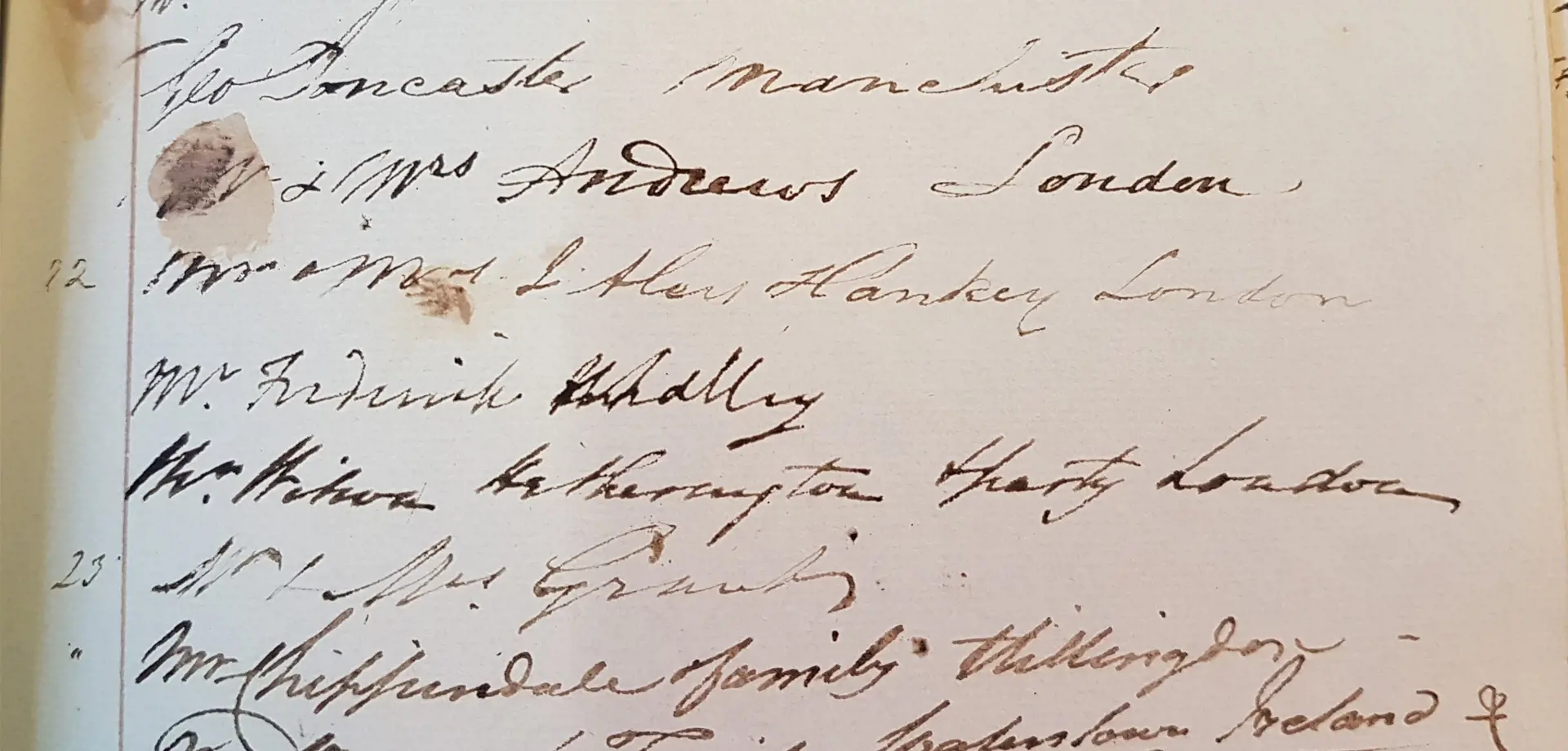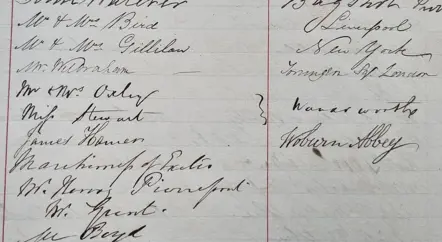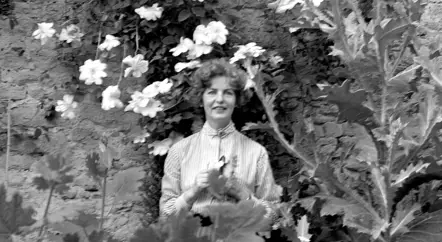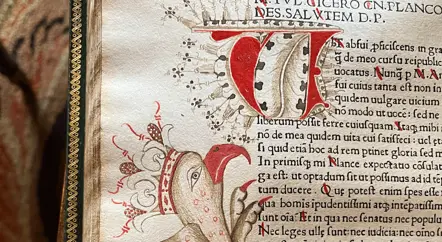Collections and Archives Assistant Ian Gregory reflects on his project to document the historic visitors’ books in Chatsworth’s archives:
One of my duties at Chatsworth is to transcribe into a spreadsheet names of visitors to the house in the 19th century. My source is a visitors’ book from that period in which people left signatures and, in some cases, names of their home towns. The book I am currently working on runs from 1828 to 1833.
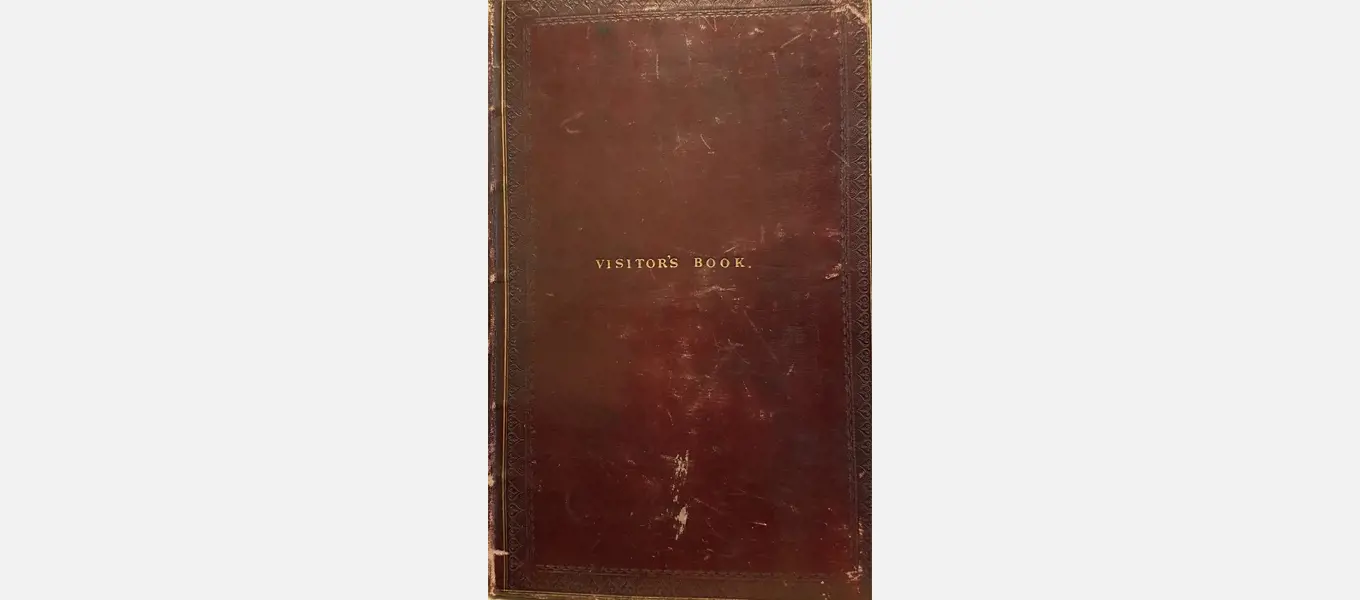
As I work I wonder, what kind of a state was the house in when these visitors arrived? From 1820 to 1840 it was radically altered by Sir Jeffry Wyatville, at the request of the 6th Duke of Devonshire. It was almost doubled in size when the North Wing was built, and changes were made to the original house as well. At the same time the Duke’s Head Gardener, Joseph Paxton, created impressive new features outdoors. The most spectacular was the Great Conservatory, a greenhouse so large that coaches drove through it and trees grew inside it.

People continued coming to Chatsworth throughout this period. The number of names entered in the book each day was not great by modern standards; 12 on 14 May 1829, 33 on 9 June 1831 and so on. Nevertheless, people were arriving on most days of the year, and the total number kept on rising. The alterations may well have been a draw, not a deterrent, since people would come to see something new and perhaps return to see what had changed since their last visit. One reason for building the North Wing was to entertain in a palatial new dining room; another was to show off works of art in a purpose-built Sculpture Gallery.
Some of the visitors were aristocrats, but many were not. They signed themselves Mr and Mrs rather than Lord and Lady. Many came from relatively close by, such as Sheffield or Manchester, but some came from southern England, others from Ireland and a few from the USA. One person (whose name proved illegible, unfortunately) visited from Rio de Janeiro, arriving in June 1831. Paris and Bavaria provided a few other visitors. In 1829 a deaf man called James Bateman signed into the visitors’ book. He came from Manchester, a city with a large deaf community and a society for their benefit.
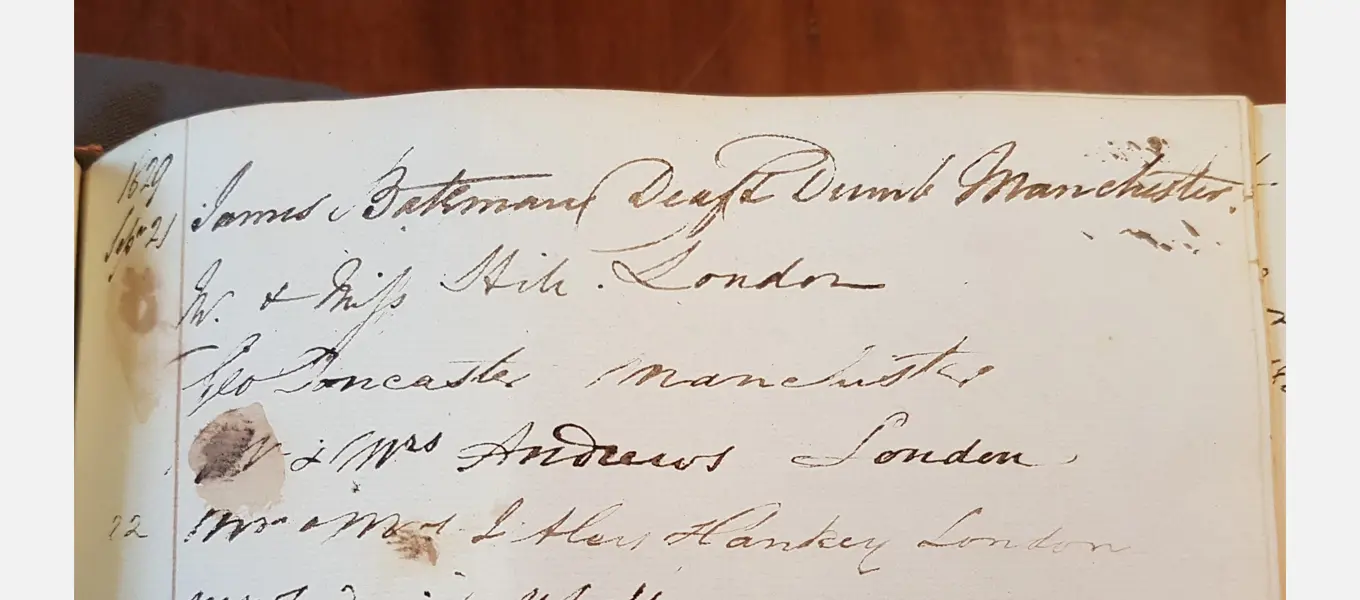
The middle classes grew in number during the 19th century as a result of the Industrial Revolution. Does that account for the number of visitors to Chatsworth listed here? Many came from Lancashire and Sheffield, newly industrialising then, but few of them recorded their professions, so it is impossible to tell from this book alone. One thing is clear: Chatsworth had an international reputation as a tourist attraction even in the 1830s.

